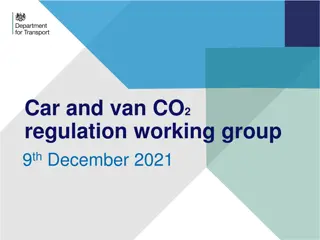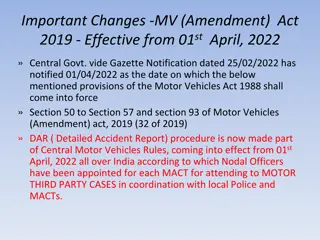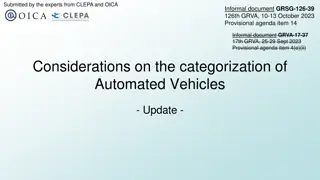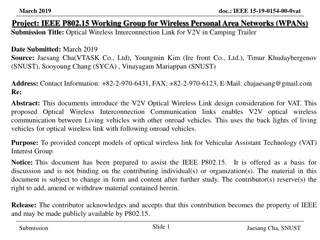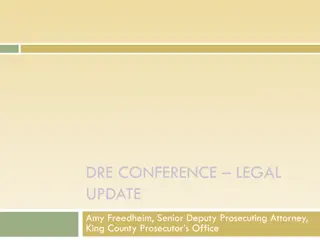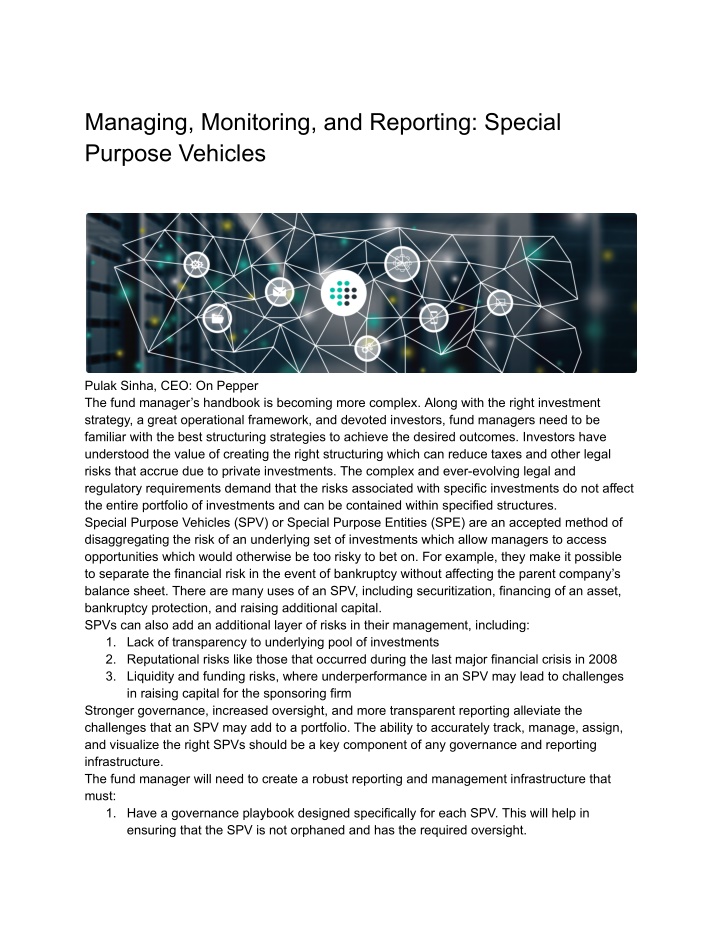
Managing, Monitoring, and Reporting: Special Purpose Vehicles - Pepper
The fund manageru2019s handbook is becoming more complex. Along with the right investment strategy, a great operational framework, and devoted investors, fund managers need to be familiar with the best structuring strategies to achieve the desired outcomes.nn
Download Presentation

Please find below an Image/Link to download the presentation.
The content on the website is provided AS IS for your information and personal use only. It may not be sold, licensed, or shared on other websites without obtaining consent from the author. If you encounter any issues during the download, it is possible that the publisher has removed the file from their server.
You are allowed to download the files provided on this website for personal or commercial use, subject to the condition that they are used lawfully. All files are the property of their respective owners.
The content on the website is provided AS IS for your information and personal use only. It may not be sold, licensed, or shared on other websites without obtaining consent from the author.
E N D
Presentation Transcript
Managing, Monitoring, and Reporting: Special Purpose Vehicles Pulak Sinha, CEO: On Pepper The fund manager s handbook is becoming more complex. Along with the right investment strategy, a great operational framework, and devoted investors, fund managers need to be familiar with the best structuring strategies to achieve the desired outcomes. Investors have understood the value of creating the right structuring which can reduce taxes and other legal risks that accrue due to private investments. The complex and ever-evolving legal and regulatory requirements demand that the risks associated with specific investments do not affect the entire portfolio of investments and can be contained within specified structures. Special Purpose Vehicles (SPV) or Special Purpose Entities (SPE) are an accepted method of disaggregating the risk of an underlying set of investments which allow managers to access opportunities which would otherwise be too risky to bet on. For example, they make it possible to separate the financial risk in the event of bankruptcy without affecting the parent company s balance sheet. There are many uses of an SPV, including securitization, financing of an asset, bankruptcy protection, and raising additional capital. SPVs can also add an additional layer of risks in their management, including: 1. Lack of transparency to underlying pool of investments 2. Reputational risks like those that occurred during the last major financial crisis in 2008 3. Liquidity and funding risks, where underperformance in an SPV may lead to challenges in raising capital for the sponsoring firm Stronger governance, increased oversight, and more transparent reporting alleviate the challenges that an SPV may add to a portfolio. The ability to accurately track, manage, assign, and visualize the right SPVs should be a key component of any governance and reporting infrastructure. The fund manager will need to create a robust reporting and management infrastructure that must: 1. Have a governance playbook designed specifically for each SPV. This will help in ensuring that the SPV is not orphaned and has the required oversight.
2. Monitor all the SPVs and the underlying investments on an ongoing basis via periodic valuations and identification of any new risks. 3. Track all aggregated asset exposures, regardless of which structure they are held in. This is critically important as the exposure to the same names, but different assets, could potentially be housed in separate structures. 4. Identify the relationships between multiple funds and their relative interest in an underlying SPV. 5. Ensure any liquidity transfers are taking place between the right entities. 6. All taxes are monitored and paid out from at the right entity level. Even with the enhanced risks and added operational complexity, there is a growing appetite for SPVs. To safely navigate these complexities, the fund manager needs to evaluate and enhance her processes and infrastructures. Pepper s platform allows asset managers to create, monitor, and report on some of the most complex SPV structures. Find out more by reaching out to us or by requesting a demo today.


